UNIVERSITY OF CAMBRIDGE INTERNATIONAL EXAMINATIONS
International General Certificate of Secondary Education
ACCOUNTING 0452/01
Paper 1 Multiple Choice May/June 2009
1 hour
Additional Materials: Multiple Choice Answer Sheet
Soft clean eraser
Soft pencil (type B or HB is recommended)
READ THESE INSTRUCTIONS FIRST
Write in soft pencil.
Do not use staples, paper clips, highlighters, glue or correction fluid.
Write your name, Centre number and candidate number on the Answer Sheet in the spaces provided
unless this has been done for you.
There are forty questions on this paper. Answer all questions. For each question there are four possible
answers A, B, C and D.
Choose the one you consider correct and record your choice in soft pencil on the separate Answer Sheet.
Read the instructions on the Answer Sheet very carefully.
Each correct answer will score one mark. A mark will not be deducted for a wrong answer.
Any rough working should be done in this booklet.
Calculators may be used.
2
© UCLES 2009 0452/01/M/J/09
1 Zafar runs a transport business and has a fleet of motor vehicles.
Which is a liability to Zafar?
A depreciation of motor vehicles for the year
B motor vehicle expenses outstanding
C motor vehicle insurance paid in advance
D stock of fuel for motor vehicles
2 Miriam had the following assets and liabilities on 30 December 2008.
$
motor vehicles 5 000
stock 16 000
debtors 4 000
bank (dr) 3 000
creditors 11 000
On 31 December 2008 Miriam invested a further $4500 as capital.
What was Miriam’s capital on 31 December 2008?
A $21 500 B $28 000 C $32 500 D $43 500
3 Which appears in a balance sheet of a sole trader?
A drawings
B equipment repairs
C gross profit
D opening stock
3
© UCLES 2009 0452/01/M/J/09 [Turn over
4 At the end of her first year of trading, Mona provides the following information.
$
sales 50 500
purchases 44 100
carriage inwards 2 300
carriage outwards 3 900
closing stock 4 600
What is Mona’s gross profit?
A $6400 B $7100 C $8700 D $11 000
5 Which accounting principle requires the financial transactions of a business to be treated
separately from those of the owner?
A business entity
B duality
C going concern
D matching
6 A business trains its staff to use computers. The only aspect recorded in the accounting records
is the costs of the training courses and the computers. The value to the business of the new skills
is not recorded.
Which accounting principle is being applied?
A consistency
B money measurement
C prudence
D realisation
4
© UCLES 2009 0452/01/M/J/09
7 John’s financial year ends on 31 December.
In 2008 he paid $16 500 for advertising in the local newspaper. This was for 15 months to
31 March 2009.
What will be recorded in John’s balance sheet at 31 December 2008?
$
A accrual 3 300
B accrual 13 200
C prepayment 3 300
D prepayment 13 200
8 The final accounts of a business are prepared on the basis that the business has no intention of
significantly reducing the size of its operation in the foreseeable future.
Which accounting principle is being applied?
A business entity
B consistency
C going concern
D realisation
9 A debit note is issued by a business.
Why has this debit note been issued?
A goods have been received from a supplier
B goods have been returned by a customer
C goods have been returned to a supplier
D goods have been sent to a customer
10 On 1 April Khalid sold goods on credit to Yasmin.
Yasmin returned some of these goods to Khalid the following day.
In which order will Khalid issue business documents in April?
A credit note, invoice, statement
B invoice, credit note, statement
C invoice, statement, credit note
D statement, credit note, invoice
5
© UCLES 2009 0452/01/M/J/09 [Turn over
11 Why does a trader offer a trade discount to his customers?
A to encourage bulk buying
B to encourage early payment
C to increase the customer’s profit
D to increase the trader’s profit
skip to main |
skip to sidebar
Get the latest free guess papers of class 8th, 9th, 10th, FA, FSC, BA, BSC, MA, MSC, MCOM, BCOM, MIT, PGD-It, and Other Classes of Punjab University and Others Colleges and Boards of Pakistan India and Bangladesh
MORE GUESSPAPERS and NOTES
197 MUSIC
221 BIOTECHOLOGY (878)
A level Latin
A-level ACCOUNTING 0452/01 Paper 1 Multiple Choice May/June 2009
A-level FIRST LANGUAGE CHINESE 0509/02
A-level Pakistan Studies 2006
A-level PHYSICS Paper 3 Extended 0625/03
BA Economics
BCOM PART 2 ADVANCED ACOUNTING
BCOM PART 2 BCRW
BCOM PART 2 BUSINESS LAW
BCOM PART-2 AUIDITING
BCOM-II Economics
BCOM-PART 2 BUSINESS TAXTATION
BCOM-PART 2 COST ACCOUNTING
BIOTECHOLOGY (878)
CA Foundation Course GDP n GNP
CA Free Markete Economy
CA important questions
CA Notes Scarcity and Choice
CA Notes UNIT 3.1 NATIONAL INCOME
CA Notes UNIT 3.2 GOVERNMENT AND THE ECONOMY
CA Notes UNIT 3.3 FISCAL POLICY
CA Notes UNIT 3.4 MONEY MONETARY POLICY
CA Notes UNIT 3.5 CAPITAL
CA Notes UNIT 3.6 INTERNATIONAL TRADE
CA Solved Assignments
CBSE Science - Chap 1 - Crop Production And Management - Page 13 - Q 1
CBSE Syllabus Class 9 - English (Communicative )
CBSE Syllabus of English Language And Literature for Class 9th For March 2009 Examination ENGLISH - LANGUAGE AND LITERATURE (Code No. 184)
CBSE Syllabus of Mathematics for Class 9th For March 2009 Examination Course Structure Class IX | Mathematics
CBSE Syllabus of Science And Technology for Class 9th For March 2009 Examination COURSE STRUCTURE CLASS IX | SCIENCE (THEORY)
CBSE Syllabus of Social Science for Class 9th For March 2009 Examination COURSE STRUCTURE Social Science | CLASS IX
Class X BIOLOGY GUESS QUESTIONS FOR SSC
Class X SOCIAL PAPER 1 GUESS QUESTIONS - - - - -
Class X Social Studies Question Paper
COMPUTER SCIECE (868)
COST AND REVENUE
Economics Solved Assignments
ELECTRICITY A D ELECTRO ICS (866)
Empirical and Molecular Formulas
EVIROMETAL SCIECE (877)
FASHIO DESIGIG (865)
GEOMETRICAL AD MECHAICAL DRAWIG (869)
Guess Paper – 2010 Class – X Subject –Chemistry (Equations)
Guess Paper – 2010 Class – X Subject – English Paper - I
IMPORTANT QUESTION CA
INDIAN CERTIFICATE OF SECONDARY EDUCATION EXAMINATION
INDIAN SCHOOL CERTIFICATE EXAMINATION
ISC MODEL EXAMII\ATION 2OTO CLASS XII MATHEMATICS
LATIN 0480/02 Paper 2 Literature May/June 2009
LITERATURE IN ENGLISH 2010/01
Managerial Economics Notes UNIT 3.1 THE SCOPE OF MANAGERIAL ECONOMICS
Managerial Economics Notes UNIT 3.2 RISK ANALYSIS RISK AND UNCERTAINTY IN MANAGERIAL DECISION MAKING
MARCH 2010
MARK SCHEME for the May/June 2008 question paper 2059 PAKISTAN STUDIES
MCOM Notes UNIT 1 DEFINITION AND BASIC CONCEPTS
MCOM Notes UNIT 1.5 PRODUCER BEHAVIOUR
MCOM Notes UNIT 1.6 THEORY OF THE FIRM
MCOM Notes UNIT 2.1 NATIONAL INCOME
MCOM Notes UNIT 2.2 INFLATION AND BUSINESS CYCLE
MCOM Notes UNIT 2.3 BALANCE OF PAYMENT AND EXCHANGE RATES
MCOM Notes UNIT 2.4 MONEY AND BANKING
Model Question Paper B.A. (Hons.) English Entrance Test
MS 01 Management Functions and Behaviour
MS 02 Management of Human Resources
MS 06 Marketing For Managers
MS-05 Management of Machines and Materials
O-level ACCOUNTING 0452/01 Paper 1 Multiple Choice May/June 2009
Pak Studies Ch 8 Chapter Name: Industry of Pakistan.
Paper BA Economics B
PHYSICAL EDUCATIO (875)

